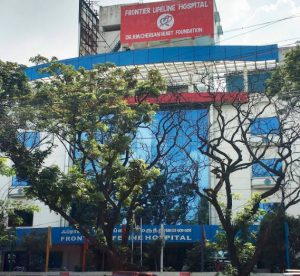Prinzmetal Angina
Prinzmetal angina is a sudden coronary artery spasm, which temporarily narrows the artery and reduces blood flow to the heart, thereby causing severe chest pain. Prinzmetal angina is a rare disorder and most often occurs at rest, usually throughout the night. Angina is featured by a feeling of squeezing, pressure, heaviness, tightness, or pain in the chest. […] Read More
Top Doctors For Prinzmetal Angina Treatments
Top Hospitals For Prinzmetal Angina Treatments
Prinzmetal Angina
- Coronary artery spasm.
- Vasospastic angina.
- Variant angina.
- Angina inversa.
- Coronary vessel spasm.
- Coronary artery vasospasm.
- Angina pectoris.
- Emotional stress.
- Exposure to cold weather.
- Excessive energy-drink consumption.
- Anti-migraine drugs like various triptans.
- Uterine-contracting drugs such as ergonovine.
- Epinephrine, dopamine, and various amphetamines.
- Tobacco, nicotine, alcohol, cocaine, and other hard drugs.
- Hyperventilation (breathing faster or deeper than necessary).
- Chemotherapeutic drugs such as capecitabine and 5-fluorouracil.
- Parasympathomimetic drugs such as acetylcholine and methacholine.
- Old age.
- Obesity.
- Diabetes.
- Inactive lifestyle.
- High blood pressure.
- High blood cholesterol levels.
- Family history of heart diseases.
- Cardiac arrest.
- Dyspnea (shortened breath).
- Arrhythmia (abnormal heartbeats).
- Myocardial ischemia and infarction (heart attack).
- A physical exam.
- Checking your medical history. This includes looking through your past and present medications and health conditions. Your doctor will ask about your symptoms and any risk factors.
- Checking your family health history.
- Electrocardiogram (ECG). Prinzmetal angina ECG records your electrical impulse to dictate patterns of your heartbeat.
- Stress test ECG reading is monitored as you exercise (such as riding a stationary bicycle), to evaluate your heart function during exercise.
- Echocardiogram (Echo-CG). This uses sound waves to produce images of your heart.
- Nuclear stress test.This measures the flow of blood to your heart muscle at rest and during stress. Radioactive material is injected into your bloodstream. A special scanner shows how the radioactive material moves with the blood in your heart muscle. Poor blood flow to any part of your heart can b seen in the images.
- Chest X-ray.This takes images of your heart and lungs.
- Blood tests.Done to detect how many enzymes have leaked out into the blood. Blood tests also look for cholesterol, blood glucose, and inflammatory marker levels.
- Coronary angiography.This uses x-ray imagine to examine the inside of your heart’s blood vessels.
- Cardiac CT scan.This takes images of your heart and chest, to show if your heart’s arteries are narrowed or if your heart is enlarged.
- Cardiac MRI.This produces images of your heart’s structure and its blood vessels.
- Holter monitor.This records your heart’s electrical activity for up to 72 hours (3 days).
- Calcium channel blockers.
- Dihydropyridine, such as:
- Nifedipine.
- Amlodipine.
- Non-dihydropyridine, such as:
- Verapamil.
- Diltiazem.
- Nitrates such as nitroglycerines like isosorbide dinitrate.
- Statins such as Fluvastatin.
- Ranolazine (Ranexa).
Symptoms
The signs and symptoms of prinzmetal angina are:
- Chest pain or discomfort, usually:
- Relieved with medications.
- Occurring while resting.
- Occurring overnight.
- Severe in clusters.
- Coming with:
- Squeezing.
- Burning sensations.
- A heavyweight in the chest.
- Abnormal feeling of fullness.
- Other symptoms, including:
- Shock.
- Fatigue.
- Nausea.
- Fainting.
- Depression.
- Palpitations.
- Cardiac arrest.
- Severe sweating.
- Lightheadedness.
- Dyspnea (shortened breath).
- Arrhythmia (abnormal heartbeat rhythm).
- Symptom-free episodes of coronary-arteries spasm.
- Myocardial ischemia (insufficient flow of blood to the heart).
Causes
Characterized by chest pain (often severe), prinzmetal angina is caused by a spasm in the coronary arteries, which supply blood to the heart muscle.
Prinzmetal angina triggers include:
- Stress.
- Smoking.
- Exposure to cold.
- Use of cocaine or other drugs.
- Medications that tighten or narrow blood vessels.
FAQ
Is prinzmetal angina life-threatening?
Prinzmetal angina is life-threatening and features recurrent angina symptoms at rest and transient ST-segment changes. Its complications range from malignant arrhythmia to high-degree AV-block to death.
How serious is variant angina?
Variant angina is serious, and pains associated with it are caused by a spasm in the arteries that supply blood to the heart muscle (coronary arteries). This results in an obstruction of blood flow. In some people, persistent spasms increase the risk of serious complications such as a life-threatening arrhythmia or heart attack.
What triggers prinzmetal angina?
Prinzmetal angina is triggered by emotional stress, smoking, medicines that tighten blood vessels (such as migraine drugs), and the use of illegal drugs. Prinzmetal angina attacks tend to occur in clusters.
What are the symptoms of prinzmetal angina?
As with typical angina, patients of prinzmetal angina often have symptoms like chest tightening, squeezing, pressure, fullness, a knot in the chest, aching, or burning sensations.
How do you test for prinzmetal angina?
You test for prinzmetal angina by checking history (medical and family), electrocardiogram, coronary artery angiography, chest x-ray, CT, and MRI.



























































































































